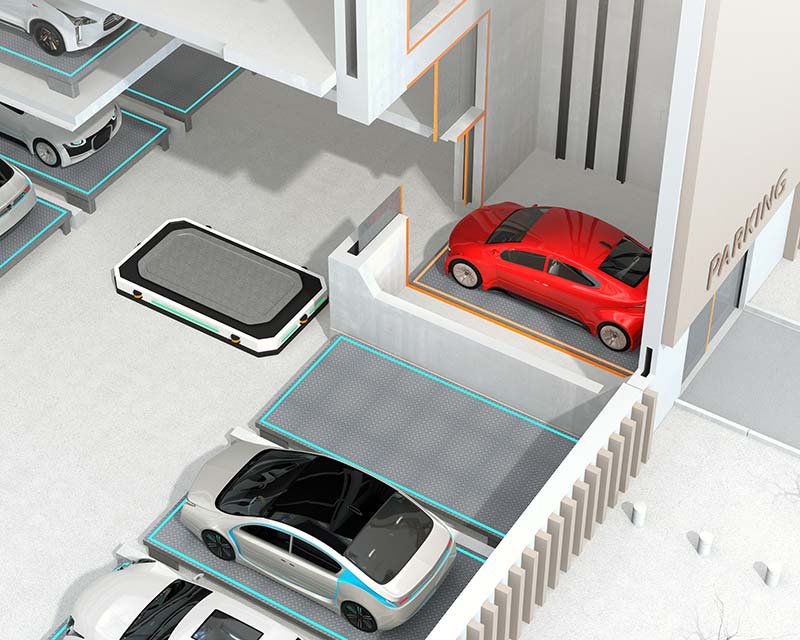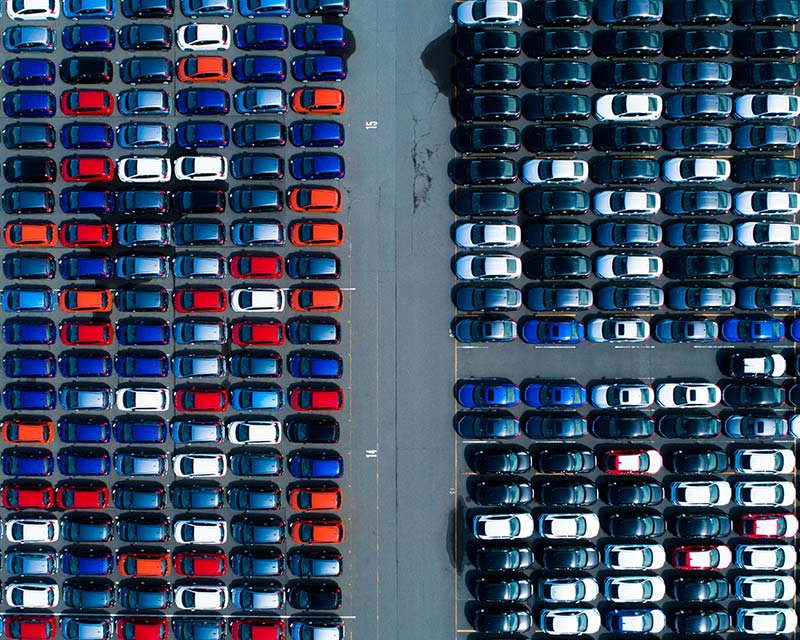Overview
With the continuing population growth around the globe, major cities are densely populated with high-rise skyscraper housing. Like every dense population, comes with everyday living needs. And one of those needs is a place to park. One of our customers developed a parking robot that can slide underneath a vehicle, gently lift the vehicle and insert the car into a vacant parking spot.

Robot parking concept

Stacked lanes/ rolls
What is the benefit of the robot you ask? One, for every parking spot, a width of 2.3 to 2.5 meters needs to be allocated for a vehicle to park, and doors can open on both sides. Because the robot is able to insert the car into the vacant spot perpendicularly, the width of each parking spot can further be minimized as passengers need not open the door to get out of the car. The system scans the vehicle's dimensions so it can utilize almost every square inch of the parking lot to park vehicles. This means hundreds of extra parking spots in a multi-level car park complex.
Lanes and rolls can be double-parked while the robot's near 360° mobility can auto park and retrieve the vehicle for the car owner with ease.

Challenges
The parking robot is an innovative design that resolve densely populated parking issues. The robots' dimensions are like a flat bed that fits neatly underneath vehicles. The computer that goes into the flat bed shaped robot needs to be compact, real compact and still provide enough processing power.
The limited installation space also requires it to be thermal efficient to operate for long periods. And the robot is battery operated, during charge/ discharge, extra heat production can be expected to dissipate to surrounding components.
The robot's parking movement is depended on LiDAR and cameras (machine vision) connected to the computer, the computer needs to provide the necessary connections for cameras and sensors. And with the robot acting as the substitute for the vehicle's movement, it must also endure vehicle-like conditions (constant shock and vibration) during operation.

Solution
Our partner chose Neousys NRU series, an efficient edge AI computer based on NVIDIA's Jetson platform featuring ultra-compact dimensions. The NRU is available with USB, PoE, M12, or GMSL2 ports. The GMSL2 ports can connect to automotive cameras that thrive in all weather conditions while the M12 connectors offer extra rugged connectivity. The platform offers up to 275 TOPS AI computation performance, making it perfect for object perception, recognition, detection, etc. It comes with mini-PCIe/ M.2 expansion slots for wireless communication modules, wide-range DC input and true wide temperature operation up to 70°C ambient. The system is also in compliance with MIL-STD-810H to withstand shock and vibration conditions, making it ideal for in-vehicle like environment deployments.
Role of the Neousys Platform
Neousys plays a pivotal role in this application story by providing the essential computing infrastructure necessary for the operation of the parking robot. Specifically, Neousys' NRU series, an efficient edge AI computer based on NVIDIA's Jetson platform, is selected by the partner to power the parking robot's intelligence.
With its ultra-compact design, delivers powerful AI computation performance (up to 275 TOPS) and offers versatile connectivity options. Built to withstand harsh conditions, it ensures reliability and thermal efficiency crucial for the parking robot's seamless integration, operation, and endurance in challenging environments.







